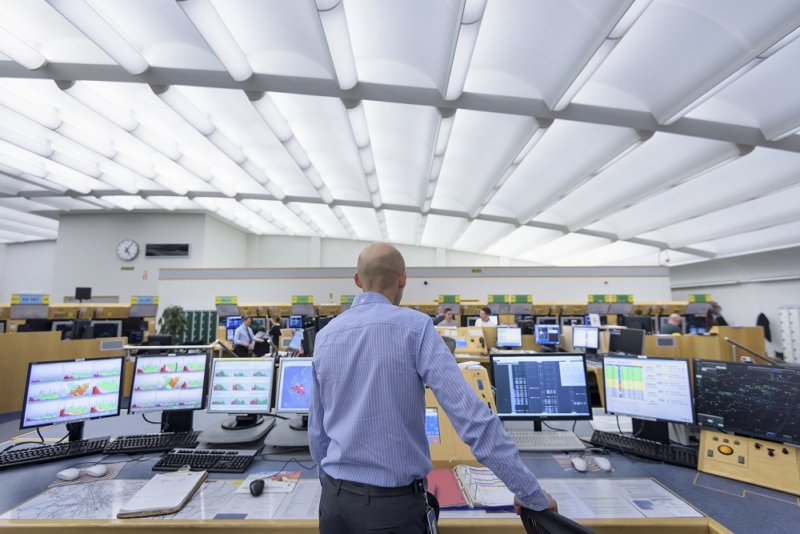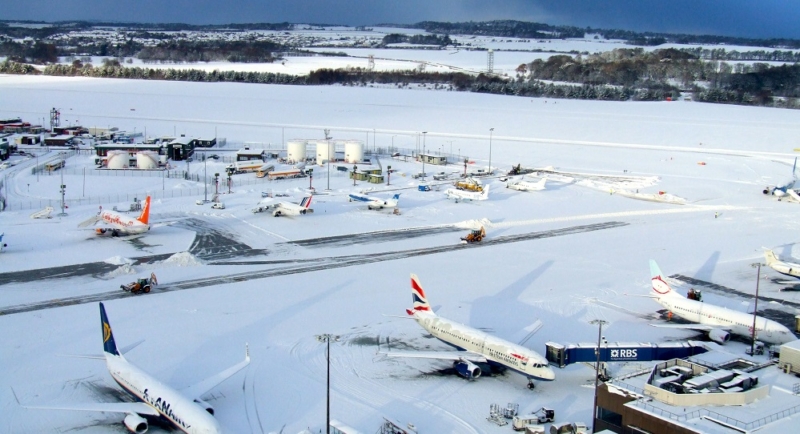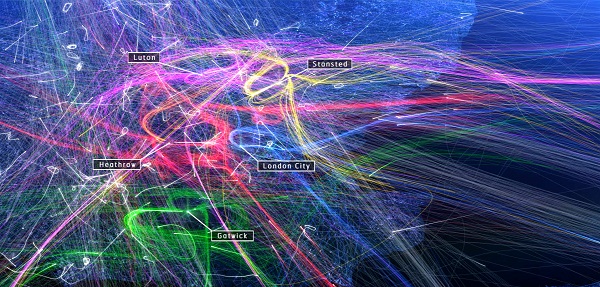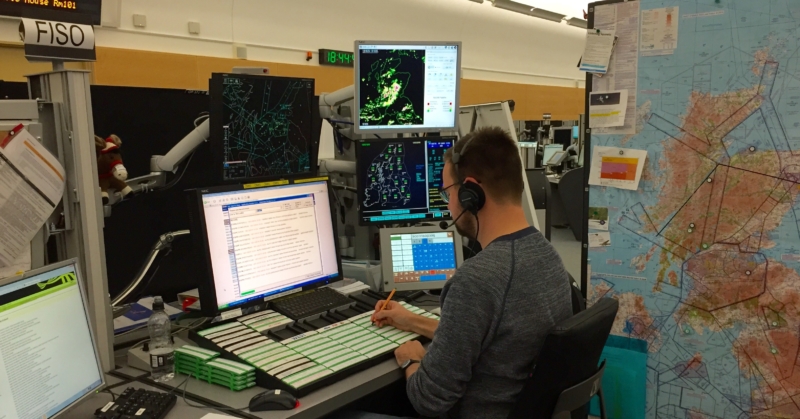The air traffic control centre at Swanwick is the stage for most of the NATS-related drama in the upcoming Skies Above Britain TV series, which starts on Wednesday at 9pm on BBC Two.
Nestled in southern Hampshire behind trees, tall fences and security gates, the centre is almost within touching distance of the M27, and yet most drivers will have had no idea that they’ve just passed one of the busiest air traffic control centres in the world.
In fact I’m pretty sure most people, unless they’re dedicated #avgeeks and avid readers of this blog, won’t have a great understanding of what goes on at Swanwick or the vital role it plays every day in safely guiding thousands of flights over England and Wales.
“That’s why we wanted to do this series” says Juliet Kennedy, NATS Operations Director and a former air traffic controller herself.
Skies Above Britain – Behind the scenes at one of the world’s busiest air traffic control centres from NATS on Vimeo.
“The only time we tend to enter the spotlight is on the very rare occasions when things go wrong, so I hope that by watching Skies Above Britain people will gain a greater appreciation of the incredible skill and expertise of the controllers and the fantastic job they do unnoticed every day of the year.”
 Swanwick is one of two control centres in the UK, the other being in Prestwick, Ayrshire, which looks after traffic over northern England, Scotland, Northern Ireland and the North East Atlantic. Swanwick itself is split into two separate civilian operations known as London Area Control, which generally handles the high level traffic over England and Wales, and London Terminal Control, which manages the lower airspace over and around London and the traffic using the five major London airports. Swanwick is also home to the RAF controllers who handle military flights in the UK.
Swanwick is one of two control centres in the UK, the other being in Prestwick, Ayrshire, which looks after traffic over northern England, Scotland, Northern Ireland and the North East Atlantic. Swanwick itself is split into two separate civilian operations known as London Area Control, which generally handles the high level traffic over England and Wales, and London Terminal Control, which manages the lower airspace over and around London and the traffic using the five major London airports. Swanwick is also home to the RAF controllers who handle military flights in the UK.
“To most people air traffic control means the tower at the airport, and while that’s certainly true the story doesn’t end there. As soon as you’re a few miles away your aircraft is handed over to the radar controllers at either Swanwick or Prestwick. Your flight is then passed from controller to controller until you reach your destination or leave UK airspace.”
 It’s in London Terminal Control, with its responsibility for the traffic in and out of London’s major airports – all turning, climbing or descending – where most of the NATS related action in Skies take place.
It’s in London Terminal Control, with its responsibility for the traffic in and out of London’s major airports – all turning, climbing or descending – where most of the NATS related action in Skies take place.
“The airspace over London is incredibly congested and among the busiest anywhere in the world and you’ll see symptoms of that throughout the series whenever something comes along to disrupt the plan, whether it’s a storm, a drone, or an aircraft emergency. The teams always deal with it incredibly well, but there is very little spare capacity either on the ground or in the air so the impact is felt very quickly.”
Much of the controlled airspace in the UK – the motorway network in the sky as Juliet calls it – has its origins in the 1950s and 60s and is in urgent need of modernisation. Redesigning the airspace to make better use of the technology now available on the ground and in the air will help reduce emissions, cut noise, increase capacity and save money.
“We don’t think that people wouldn’t accept having to drive on 1960s roads, so why do we accept it in our skies? With the air traffic growth that’s expected over the coming years, without airspace change we’re likely to see delays much higher than they are today. That’s not something I want to see happen.”
Comments
Please respect our commenting policy and guidelines when posting on this website.




15.08.2016
12:15
Ronald Dobson
To draw a simile between today’s skies and 60’s roads is a little bit facile; e.g. it is much more difficult and costly to build a 200 mile motorway than to reroute a few traffic lanes. Will the show be highlighting the dreadful inefficiencies, over-budgets and computer foul-ups that the Swanwick projects has had?
15.08.2016
22:53
Andrew Hawkins
If you cared to investigate rather than make glib assertions I think you’ll ascertain that rerouting a few traffic lanes is equally, if not more costly than, building a 200 mile motorway Ronald.